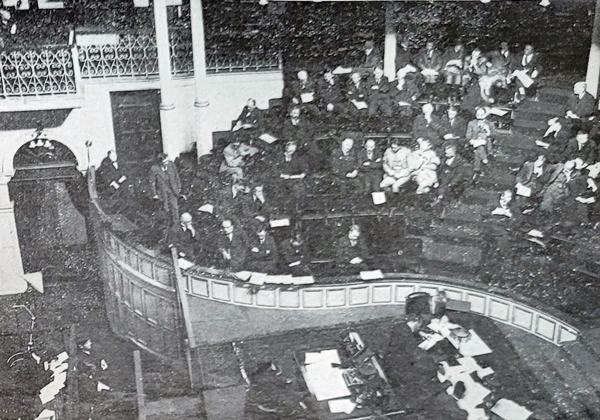Cosgrave elected president as third Dáil finally convenes
Dublin, 11 September 1922 – William T. Cosgrave has been elected the new President of the Provisional Government.
Mr Cosgrave will head a new cabinet which was formed during the first meeting of the new Dáil which was held in Leinster House in Dublin on 9 September. The third Dáil was elected on 16 June but the first session was postponed on five occasions owing to the level of strife in the country.
In attendance were pro-treaty TDs, Labour representatives and Farmers’ Party and Independent TDs. The meeting was a relatively calm affair; perhaps this was due to the fact that there was only one anti-treaty TD in attendance, Laurence Ginnell, and he left before the end of the opening session. After repeated interruptions during which he asked whether the assembly was Dáil Éireann or a partition parliament, he was removed from the chamber.
The first business of the new Dáil was to elect a Ceann Comhairle, a role for which only Professor Michael Hayes was nominated.
In his book Judging W.T. Cosgrove, UCD Emeritus Professor Micheal Laffan examines the political life of the man and gives the reader a deep sense of his career as local politician, rebel, minister, head of government for almost ten years and opposition leader
After this, W.T. Cosgrave was questioned as to his policy should he be elected president. He stated:
‘If elected to this position it is my intention to implement the Treaty – as sanctioned by the vote of the Dáil and the electorate…, to enact a Constitution, to assert the authority and supremacy of Parliament, to support and assist the National Army in asserting the people's rights, to ask Parliament, if necessary, for such powers as are deemed essential for the purpose of restoring order and to suppress all crimes, to expedite as far as lies in the power of the Government the return of normal conditions throughout the country, and having established Saorstát on a constitutional basis, to speed the work of reconstruction and reparation.’
Labour leader Thomas Johsnons pressed Mr Cosgrave for clarity on the role of the president and on how information would be shared by the government with the Dáil. Johnson declared Cosgrave’s response to be ‘unsatisfactory’, so he and his deputies voted against Cosgrave’s election ‘with great regret’. They could not prevent it however.
The newly elected President Cosgrave went on to propose a full set of ministers as required by the rules of the constitution of Dáil Éireann. All of his proposals were ratified by the Dáil.
The new Irish government is as follows:
President – William T. Cosgrave
Finance – William T. Cosgrave
Defence – General Richard Mulcahy
Foreign Affairs – Desmond Fitzgerald
Local Government – Ernest Blythe
Agriculture – Patrick J. Hogan
Trade, Commerce and Economic Affairs – Joseph McGrath
Post-master General – J.J. Walsh
Education – Prof. Eoin Mac Neill
Home Affairs – Kevin O’Higgins
Ministers without portfolios – Eamon J. Duggan and Fionán Lynch.
[Editor's note: This is an article from Century Ireland, a fortnightly online newspaper, written from the perspective of a journalist 100 years ago, based on news reports of the time.]





















